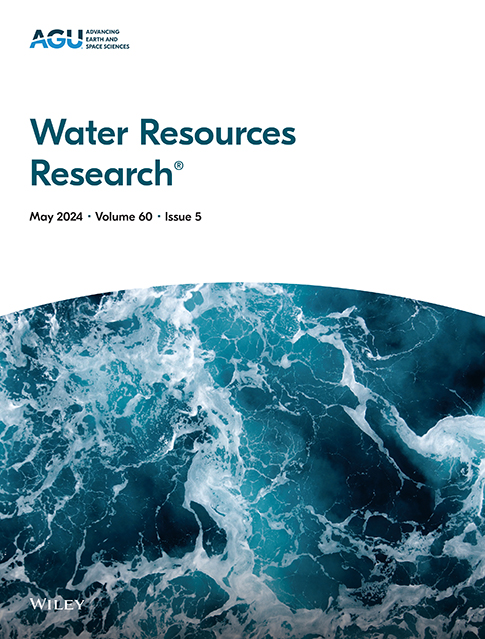River Thermal Dynamics and Heatwaves of Polish Rivers Under Climate Change
IF 5
1区 地球科学
Q2 ENVIRONMENTAL SCIENCES
引用次数: 0
Abstract
Progression of global warming poses a significant risk to river ecosystems. However, how river heatwaves' characteristics across complex hydrological systems alter under climate change is still poorly understood. In this study, long-term reconstructed daily river water temperatures (RWTs) from 125 hydrological stations in 70 rivers across Poland, were used. Bayesian estimator of abrupt change, seasonal change, and trend (BEAST) method was used to track the abrupt changes of RWTs. Moreover, the characteristics of river heatwaves, including number, duration, intensity, and category, were evaluated. BEAST analysis revealed pronounced spatiotemporal variability in RWT trends in Poland, influenced by natural and anthropogenic factors. Notably, the maximum abrupt changes of RWT were observed during the 1980s and 1990s. Southern Poland, particularly mountainous regions, exhibited more pronounced river temperature changes and severe heatwaves compared to the milder northern regions. Our results also showed a statistically significant increase in frequency and intensity of river heatwaves at 121 out of the 125 studied stations (p-value < 0.05), which were consistent with the warming of air temperatures. For all the designated stations, the majority of river heatwaves belonged to the category “moderate,” followed by “strong,” “severe,” and “extreme.” Number, duration, and intensity of the river heatwaves were highly correlated with air temperatures, with the correlation coefficients being 0.624, 0.631, and 0.604, respectively. Our findings further suggest that mitigation measures shall be taken to reduce the effects of climate warming on Polish river ecosystems, especially under low flow conditions which are more vulnerable to the intensified river heatwaves.气候变化下波兰河流的热力动力学和热浪
全球变暖的加剧对河流生态系统构成了重大威胁。然而,在气候变化的影响下,河流热浪在复杂水文系统中的特征是如何变化的,人们仍然知之甚少。在这项研究中,使用了来自波兰70条河流的125个水文站的长期重建的每日河流水温(RWTs)。采用贝叶斯突变、季节变化和趋势估计(BEAST)方法跟踪rwt的突变。此外,还对河流热浪的数量、持续时间、强度和类型等特征进行了评价。BEAST分析显示,受自然和人为因素影响,波兰RWT趋势具有明显的时空变异性。值得注意的是,在20世纪80年代和90年代,RWT突变最大。波兰南部,特别是山区,与较温和的北部地区相比,表现出更明显的河流温度变化和严重的热浪。我们的研究结果还显示,在125个研究站点中,有121个站点的河流热浪频率和强度在统计上显著增加(p值<;0.05),这与气温的升高一致。在所有指定站点中,大多数河流热浪属于“中等”类别,其次是“强”,“严重”和“极端”。河流热浪次数、持续时间和强度与气温高度相关,相关系数分别为0.624、0.631和0.604。我们的研究结果进一步表明,应采取缓解措施,以减少气候变暖对波兰河流生态系统的影响,特别是在更容易受到河流热浪加剧影响的低流量条件下。
本文章由计算机程序翻译,如有差异,请以英文原文为准。
求助全文
约1分钟内获得全文
求助全文
来源期刊

Water Resources Research
环境科学-湖沼学
CiteScore
8.80
自引率
13.00%
发文量
599
审稿时长
3.5 months
期刊介绍:
Water Resources Research (WRR) is an interdisciplinary journal that focuses on hydrology and water resources. It publishes original research in the natural and social sciences of water. It emphasizes the role of water in the Earth system, including physical, chemical, biological, and ecological processes in water resources research and management, including social, policy, and public health implications. It encompasses observational, experimental, theoretical, analytical, numerical, and data-driven approaches that advance the science of water and its management. Submissions are evaluated for their novelty, accuracy, significance, and broader implications of the findings.
 求助内容:
求助内容: 应助结果提醒方式:
应助结果提醒方式:


